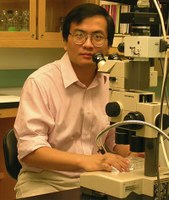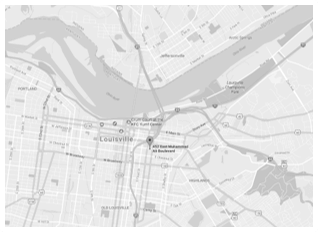- Jixiang Ding, PhD
Scholarly Activities
The research in Dr. Ding’s laboratory is aiming to elucidate the molecular basis of orofacial congenital diseases through understanding the molecular pathways and genetic programs that control normal embryonic processes during orofacial development, differentiation, morphogenesis and patterning. Ongoing studies address the functions of several key signaling pathways in craniofacial malformation such as cleft palate using genetically manipulated mouse models. We have also addressed the molecular mechanisms control oral epithelial differentiation and its possible relationship with cell transformation. The results from these studies will provide signifi cant insights into the mechanisms underlying facial abnormality and oral carcinogenesis, two extremely common health problems in US and worldwide.
Peer-Reviewed Publications (2014-2017)
- Jin JZ, Warner DR, Lu Q, Pisano MM, Greene RM, Ding J (2014) Deciphering TGF-β3 function in medial edge epithelium specification and fusion during mouse secondary palate development. Dev Dyn. 243,1536-43.
- Jin JZ and Ding J. (2014) Strain-dependent effects of transforming growth factor-β1 and 2 during mouse secondary palate development. Reprod Toxicol 50,129-33.
- Ji R, Meng L, Jiang X, Cvm NK, Ding J, Li Q, Lu Q. (2014) TAM Receptors Support Neural Stem Cell Survival, Proliferation and Neuronal Differentiation. PLoS One. Dec 16; 9 (12).
- Jin JZ, Warner DR and Ding J. (2014) Regional specification of palate medial edge epithelium along the anterior to posterior axis. The International Journal of International Developmental Biology 58, 713-717.
- Jin JZ and Ding J. (2015) Strain-Dependent Gene Expression during Mouse Embryonic Palate Development. Journal of Developmental Biology, 3, 2-10.
- Warner D, Ding J, Mukhopadhyay P, Brock G, Smolenkova IA, Seelan RS, Webb CL, Wittliff JL, Greene RM, Pisano MM. (2015) Temporal Expression of miRNAs in Laser Capture Microdissected Palate Medial Edge Epithelium from Tgfβ3-/- Mouse Fetuses. Microrna 4, 64-71.
- Wright DM, Buenger DE, Abashev TM, Lindeman RP, Ding J, Sandell LL. (2015) Retinoic acid regulates embryonic development of mammalian submandibular salivary glands. Dev Biol. 407, 57-67.
- Li S, Moore AK, Zhu J, Li X, Zhou H, Lin J, He Y, Xing F, Pan Y, Bohler HC, Ding J, Cooney AJ, Lan Z, Lei Z (2016) Ggnbp2 Is Essential for Pregnancy Success via Regulation of Mouse Trophoblast Stem Cell Proliferation and Differentiation. Biol Reprod. 94(2):41.
- Jin JZ, Zhu Y, Warner DR and Ding J. (2016) Analysis of extraembryonic mesodermal structure formation in the absence of morphological primitive streak. Dev Growth Differ. 58(6):522-9
A proposed model for palate re-orientation. The prospective and definitive MEE is shown in red. (A-C) Anterior (A), posterior (B) and middle (C) regions of E13.5 palate. (D) The middle region of palate at an intermediate stage between E13.75 and E14.5. (E) The middle region of E14.5 palate. d: distal end; m: medial edge area.


